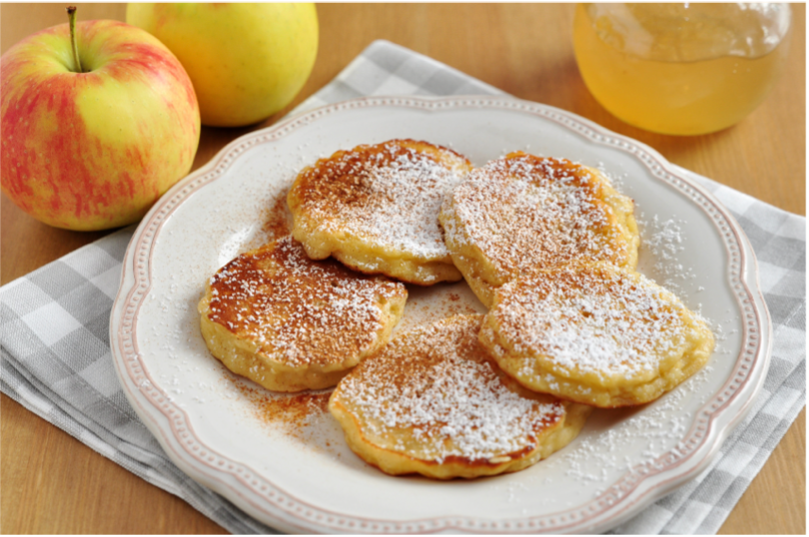We all have our favourite dishes that we associate with our childhood, or those that are prepared by just a special person. Comfort food is the name given to food that we simply associate with good. It gives us great pleasure and joy because it evokes positive emotions in us.
Comfort food makes us feel good, it activates the reward area of the brain, which can improve mood and reduce stress when we eat these foods, in the moment. Maybe we received a lot of love and friendliness from our mother or grandmother and she always greeted us with a plate of delicious fish and chips or a hot pie, then in the future, these are the meals that will be comfort food for us because they release positive memories in us.
What exactly is comfort food?
These are meals or products whose consumption provides us with mental solace and mood enhancement. We may associate them with carefree times, family gatherings or cross-generational traditions. They are often thought of as homemade dishes that we used to eat as children, or selected foods that we reached for in certain situations.
Is comfort food healthy?
Many people think that this type of food is mainly high in calories, although this is not always true. It all depends on the ingredients and cooking methods that have been used to prepare this meal, and really how often we are craving the comfort.
If you notice yourself craving comfort foods regularly, perhaps these comfort foods are not truly satisfying. In these cases, think of what else may bring comfort – is there another emotion you are looking to satisfy? If you are feeling lonely, eating may not help – instead, visit a friend or give a family member a call. If you feel tired, can you concentrate on improving your sleep that week? You may be looking to fix a certain emotion with comfort food, but this does not help in the long term. In this case, seeking support for emotional eating can help.
Which products to use when cooking?
Try to use seasonal produce to prepare your favourite dishes. And don’t forget herbs; they will add a delicious aroma, and also help to improve digestive function. Choose good quality olive oil instead of margarine. Remember that comfort food can be both delicious and healthy – because it is all about how it is prepared.
Recipes
Homemade pizza with green pesto and rocket (serves 2-4)
Ingredients
For the dough:
- 360g of whole wheat flour
- large pinch of salt
- 2 teaspoons sugar
- 3 tablespoons oil
- 230ml warm water (not hot)
- 40 g fresh yeast
Additions
- tomato sauce to spread on the pizza
- fresh rocket
- cherry tomatoes
- basil pesto
- 300 g mozzarella cheese
Method of preparation
Crumble fresh yeast into warm water, add about a teaspoon of sugar and mix. Set aside for a while until bubbles form. In a large bowl, pour the flour, add salt, sugar, crumbled yeast and oil. Knead the dough vigorously with your hands. The dough should be soft, elastic and come off easily from your hands. Shape the dough into a ball and leave it, covered, in a warm place for about an hour. Preheat the oven to 250 degrees C.
When the dough has doubled in volume, remove it from the bowl. Line an oven tray with baking paper. Brush the paper with a little olive oil. Place the risen dough on the paper and form the shape of the pizza with your hands. Spread the pizza with tomato sauce. Then top with grated mozzarella, halves of cherry tomatoes and spoon the pesto into the shape of circles. Place the pizza in the preheated oven and bake for approximately 11 minutes. Keep an eye on the pizza to prevent it from burning. Sprinkle the finished pizza with fresh rocket and enjoy!
Fluffy apple pancakes

Ingredients
- 1 litre of kefir
- 2 eggs
- 360g whole wheat flour
- 3 tablespoons sugar
- 2 teaspoons baking soda
- 2 large apples
- butter for frying
Method of preparation
Peel the apples, remove the seeds and cut into very small cubes or grate. Crack the eggs into a bowl, add the sugar and whisk.
Then add flour mixed with baking soda and kefir. Whisk until the ingredients are combined. Add the apples to the mixture and mix everything together. Melt the butter in a pan and spoon portions of the dough into pancakes. Fry the pancakes over a low heat until golden brown. Serve sprinkled with icing sugar.
Summary
Comfort food can belong to a group of meals that we associate previous happy memories with, although many studies show that we reach for them when we are in different moods (e.g. feeling sad or happy, stressed). Because we often associate them with close family or friends, or pleasant situations, they are indeed able to provide an improvement in mood. More research is needed on, for example, the effects of such foods on human health, not only in the short term but also in the long term. Remember to try to be mindful – if you are struggling with your relationship with food, reach out to a registered dietitian today!
To book a 1-1 consultation with one of our dietitian specialist, click HERE
Reference
Wagner, H.S., Ahlstrom, B., Redden, J.P., Vickers, Z., Mann, T. (2014). The myth of comfort food. Health Psychology, 33(12), 1552-1557.
Locher, J.L., Yoels, W.C., Maurer, D., Van Ells, J. (2006). Comfort Foods: An exploratory journey into the social and emotional significance of food. Food and Foodways, 13(4), 273-297.
https://niebonatalerzu.pl/2020/09/proste-ciasto-drozdzowe-z-jablkami.html
https://www.doradcasmaku.pl/przepis-pizza-z-pesto-z-rukoli-292996








